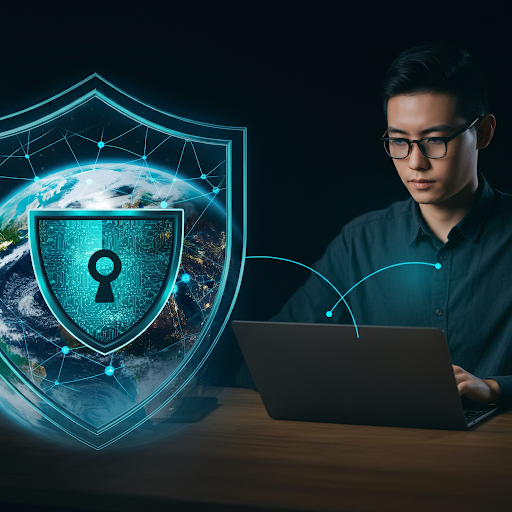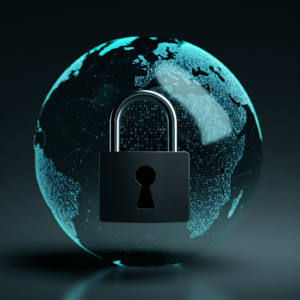Chuong.vn: Hello there! Today, we’re diving into the world of VPNs. If you’ve ever wondered how to use a VPN or why you might need one, you’re in the right place. Let’s explore this topic together and uncover the secrets of online privacy and security.
How to Use a VPN: A Beginner’s Guide
1. Introduction to VPNs and Why You Should Use One
Have you ever felt like someone might be watching your online activities? Well, you’re not alone. In today’s digital age, online privacy has become a precious commodity. This is where a VPN comes into play.
A VPN, or Virtual Private Network, is like a secret tunnel for your internet connection. It encrypts your data and hides your real IP address, making it much harder for anyone to track your online activities. But why should you care?
- Enhanced Privacy: A VPN keeps your browsing history and online identity hidden from prying eyes.
- Improved Security: It protects your data from hackers, especially when using public Wi-Fi.
- Access to Geo-restricted Content: VPNs can help you bypass geographical restrictions on websites and streaming services.
Now that we understand the basics, let’s explore how you can start using a VPN to protect your online presence.
2. Common Types of VPNs
Not all VPNs are created equal. Let’s look at the most common types:
- Software-based VPNs: These are apps you install on your devices. They’re user-friendly and perfect for personal use.
- Hardware-based VPNs: These are physical devices that create a secure network. They’re often used by businesses for enhanced security.
- Free vs. Paid VPN Services: While free VPNs exist, paid services generally offer better security, faster speeds, and more reliable connections.
Understanding these differences is crucial in choosing the right VPN for your needs.
3. How to Choose the Right VPN for Your Needs
Selecting the perfect VPN can feel overwhelming, but don’t worry! Here are some key factors to consider:
- Speed: Look for VPNs that offer high-speed connections to minimize impact on your browsing experience.
- Security: Strong encryption (like AES-256) and a no-logs policy are must-haves.
- Privacy: Ensure the VPN doesn’t track or sell your data.
- Additional Features: Some VPNs offer extras like ad-blocking or malware protection.
Remember, the best VPN for you depends on your specific needs. Take your time to research and compare different options.
4. Setting Up VPN on Different Devices
Now, let’s get practical. Setting up a VPN is easier than you might think!
For Windows and macOS:
- Download your chosen VPN app from the official website.
- Install the application following the on-screen instructions.
- Open the app and log in with your credentials.
- Select a server and click ‘Connect’.
For iOS and Android:
- Visit the App Store (iOS) or Google Play Store (Android).
- Search for your VPN provider’s app and download it.
- Open the app, log in, and connect to a server.
For Routers:
Setting up a VPN on your router can be more complex. It usually involves:
- Accessing your router’s admin panel.
- Configuring VPN settings (which vary by router and VPN service).
- Saving the changes and restarting your router.
Always refer to your specific VPN provider’s instructions for the most accurate setup process.
5. Using Your VPN Effectively
Great! You’ve set up your VPN. Now, let’s make sure you’re using it effectively:
- Always connect before browsing: Make it a habit to turn on your VPN before you start your online activities.
- Choose the right server: Select a server location based on your needs (e.g., local for speed, specific country for accessing geo-restricted content).
- Use the kill switch: If your VPN offers a kill switch feature, enable it to protect your data if the VPN connection drops.
- Regular updates: Keep your VPN software updated for the best performance and security.
To check if your VPN is working:
- Visit WhatIsMyIP.com before and after connecting to your VPN.
- If the IP address changes, your VPN is working correctly.
6. Common VPN Issues and How to Fix Them
Even the best VPNs can sometimes have hiccups. Here are some common issues and their solutions:
Slow Connection Speeds:
- Try connecting to a different server, preferably one closer to your location.
- Check your base internet speed without the VPN to ensure the issue isn’t with your ISP.
Connection Drops:
- Ensure your VPN app is up to date.
- Try switching to a different VPN protocol in the app settings.
Unable to Access Certain Websites:
- Some websites block known VPN IP addresses. Try connecting to a different server.
- If it’s a streaming service, ensure your VPN supports streaming and use their recommended servers.
Remember, if you’re experiencing persistent issues, don’t hesitate to contact your VPN provider’s customer support. They’re there to help!
Conclusion
Congratulations! You’re now equipped with the knowledge to use a VPN like a pro. By following this guide, you’ve taken a significant step towards enhancing your online privacy and security.
Remember, in our increasingly connected world, protecting your digital footprint is more important than ever. A VPN is a powerful tool in your cybersecurity arsenal, but it’s just one piece of the puzzle. Stay informed, stay cautious, and enjoy a safer online experience!
Do you have any questions about using VPNs? Feel free to ask in the comments below. Stay safe out there, and happy browsing!




